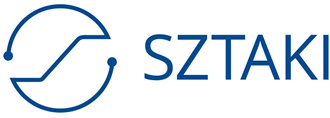
Description of the RI
The network aims to research and develop new static and dynamic environmental sensing methods and tools for multi-sensor measurement environments and to demonstrate and apply these in applications addressing air and ground autonomous driving, traffic monitoring, remote sensing, smart city critical infrastructure monitoring, cultural heritage protection, ecology, earth observation, 3D urban reconstruction and medical fields.
The RI’s measurement laboratory contains several different laser scanners, which enable one to scan both the static and the dynamic environment, and to detect, recognize and reconstruct various objects and events. The representation, interpretation, and visualization of the obtained 3D/4D models are cutting edge research tasks today, which can be targeted by the laboratory. Also, the RI is equipped with micro air vehicles and a motion capture system that enables the tracking of retroreflective markers with high precision and data rate. Therefore, the SZTAKI MIMO (MIcro aerial vehicle and MOtion capture) arena is an ideal tool to record ground truth data to evaluate the performance of different on-board computer vision algorithms for ground and aerial mobile robots, e.g., visual odometry, 3D mapping, simultaneous localization and mapping, and tracking of objects.
The goal of the RI is the interpretation and organization of information coming from distributed multimodal sensors. Sensors can be dynamic or static imaging devices or other multimedia sources. The main challenge is to compare, evaluate, recognize, and classify spatial and temporal sequences of events by the means of machine learning, data mining, machine perception, optimization procedures and variation analysis.
Activities and Services
- 3D LiDAR and aerial survey and reconstruction, algorithmic point cloud and image processing
- design of spatial artificial intelligence algorithms, software development, automatic interpretation of spatial data, sensor fusion, consulting
- modeling, motion tracking and data analysis within the MIMO arena, hardware-software testing and evaluation
- medical image segmentation, 3D organ reconstruction
- automatic analysis of architectural and archaeological structures
- earth observation tools to support transport and agriculture applications
- environmental perception of autonomous driving
Distributed
Institute for Computer Science and Control (SZTAKI)
Machine Perception Research Laboratory (MPLab)
Budapest
Fully operational
- National Laboratory for Autonomous Systems (NLAS)
- Hungarian Drone Coalition (HDC)
INTERNATIONAL COLLABORATION INSTITUTIONAL PARTNERS
- Institut national de recherche en informatique et en automatique (INRIA)
- University of Zurich (UZH)
- Czech Technical University (CTU)
- University of Konstanz (UoK)
Tamás Szirányi, head of research laboratory







